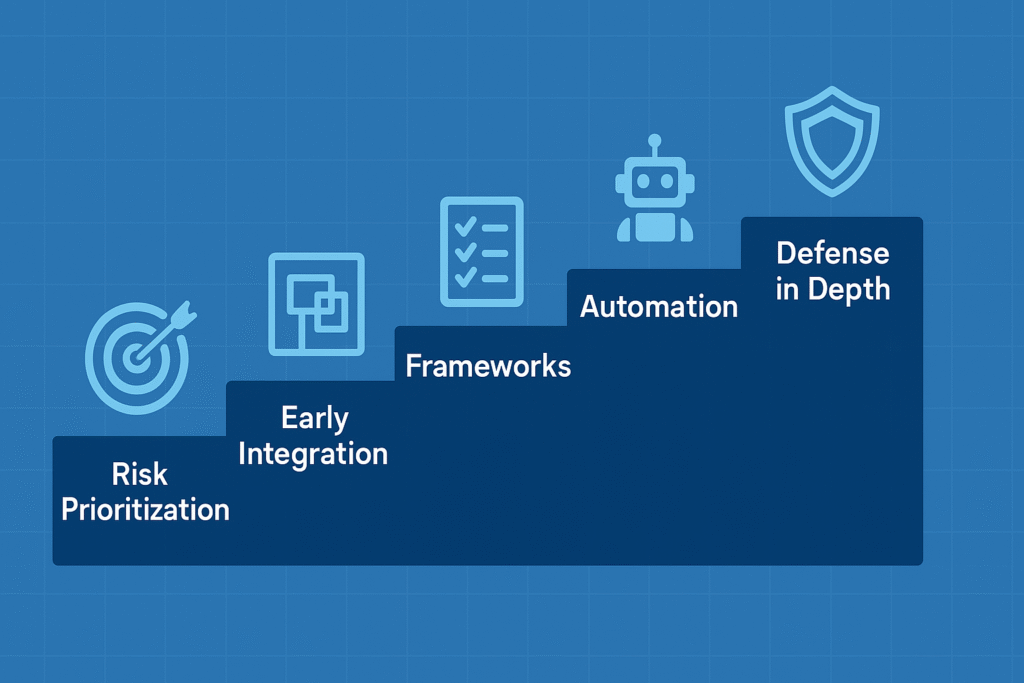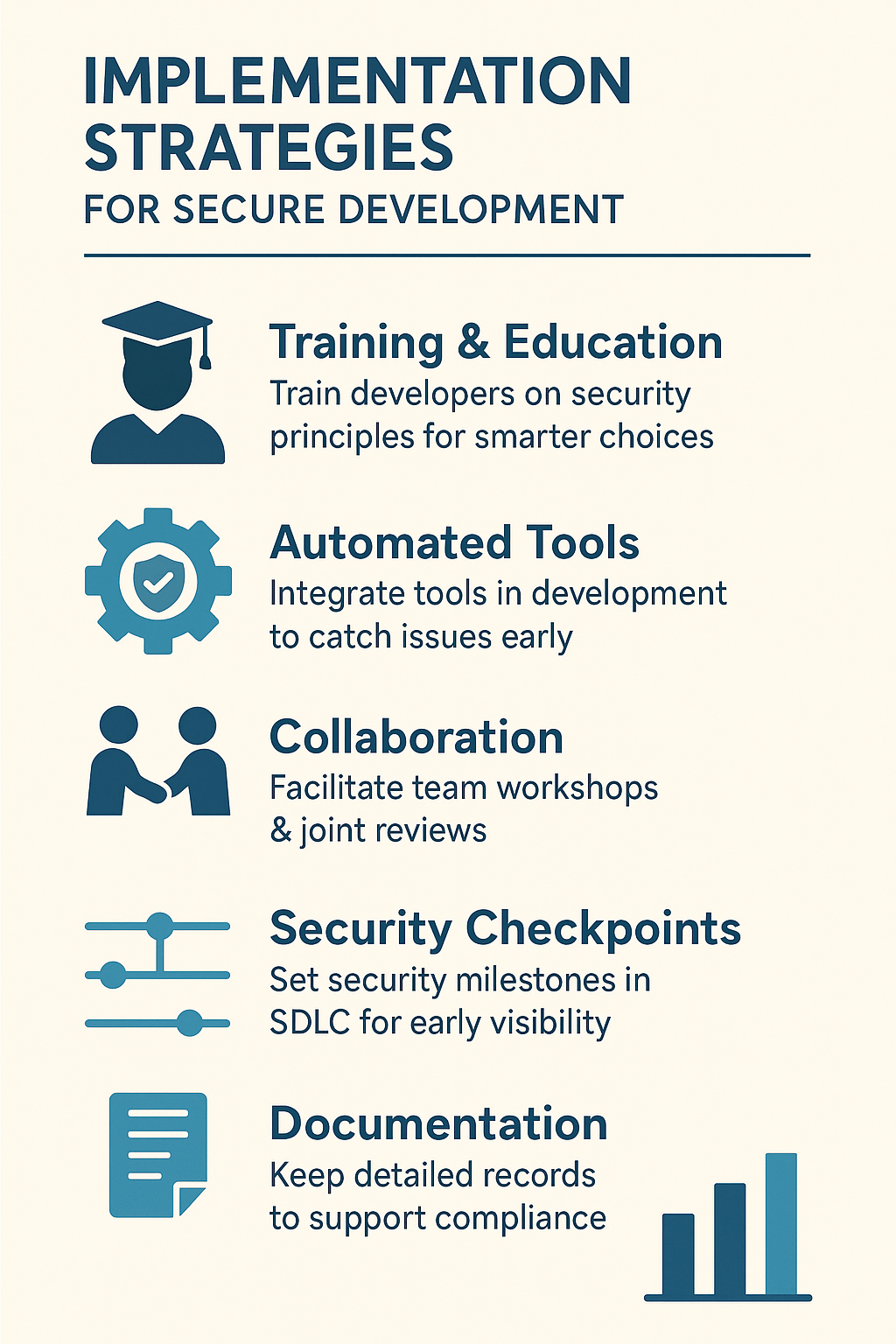
Designing secure systems shouldn’t drain your bank account. Our bootcamp graduates often share how building security from scratch saved their companies thousands in emergency fixes. Take it from someone who’s spent years training developers, when you weave secure coding into your daily work, those scary breach headlines won’t keep you up at night.
We’ve watched countless teams transform their security approach after learning the basics. Smart protection isn’t about buying every fancy tool, it’s about knowing which fundamentals actually matter for your stack. Want real examples of how teams cut security costs while staying safe? Read on.
Key Takeaways
- Prioritize security by risk to use resources efficiently.
- Integrate security early through Secure Coding Practices and threat modeling.
- Use layered defenses and automation to reduce costs and improve protection.
The Challenge: Security vs. Budget (and Why It Matters)
Security teams often face a tough question: how do we defend against growing threats without blowing the budget? Many organizations find themselves squeezed, trying to cover every vulnerability with expensive tools and processes. Yet, breaches still happen, costing millions and damaging reputations.
For instance, a recent study showed that the average cost of a data global average was US$4.88 million in 2024. (1) That’s a heavy hit, especially for smaller firms. We’ve seen firsthand how skimping on early security measures leads to expensive firefighting later. The tension between wanting perfect security and keeping costs manageable is real, but it’s possible to find a middle ground.
Understanding Cost-Effective Secure Design

Cost-effective secure design means building security into the system in ways that provide strong protection without unnecessary spending. It’s not about cheap fixes or ignoring risks. Instead, it’s about smart decision-making, focusing on critical assets, applying proven security principles, and avoiding waste.
We’ve found, and research supports, that secure coding practices significantly reduce vulnerabilities introduced early in development. By writing secure code from the start, developers reduce vulnerabilities that could otherwise lead to breaches. Alongside that, techniques like threat modeling and risk assessment help us prioritize where to focus efforts so every dollar counts.
Actionable Steps: Implementing Cost-Effective Secure Design

1. Risk-Based Prioritization
Assessing risks is the first step to an efficient security plan. You identify what matters most, the crown jewels of your system, then figure out the threats and vulnerabilities that could hit those assets.
- Identify critical assets.
- Assess threats and vulnerabilities.
- Prioritize investments based on risk.
💡 Pro Tip: Focus on protecting the most critical assets and the most likely or impactful threats.
This approach stops you from spreading resources too thin over low-risk areas that add complexity but little benefit.
2. Security by Design Integration
We always push to bake security in early, especially through Secure Coding Practices. When developers focus on integrating security design early and keep protection in mind from day one, it’s easier to avoid mistakes that cost time and money to fix later.
- Incorporate security requirements into design.
- Perform threat modeling during design.
- Address vulnerabilities early.
💡 Pro Tip: Early security integration reduces expensive fixes, breach responses, and downtime.
It’s like building a house with a solid foundation rather than patching cracks after a storm.
3. Leveraging Standards and Frameworks

Using established frameworks like NIST helps prevent reinventing the wheel. (2) Pairing them with a practical secure design review approach ensures each control is properly implemented while keeping security tight and costs reasonable. Select a relevant framework.
- Implement controls based on the framework.
- Review and update regularly.
💡 Pro Tip: Using standards and frameworks saves time and cost while ensuring effectiveness.
We’ve found that compliance with these frameworks also simplifies audits and builds trust with clients.
4. Automation and Tool Utilization
Automating mundane security tasks frees up time and reduces human error. Tools for static analysis, vulnerability scanning, and monitoring catch issues early and let teams focus on more complex problems.
- Use automated code analysis tools.
- Regularly scan for vulnerabilities.
- Automate security monitoring and alerts.
💡 Pro Tip: Automation reduces manual effort, lowers human error, and speeds up security processes.
For example, automated static analysis helps developers spot flaws as they write code, rather than after deployment.
5. Defense in Depth Implementation
Relying on a single control is risky and often expensive. Instead, layering security controls creates multiple hurdles for attackers, improving protection cost-effectively.
- Implement layers like firewalls, access controls, intrusion detection.
- Ensure each layer provides a unique defense.
- Test effectiveness regularly.
💡 Pro Tip: Layered security provides robust protection and can be more cost-effective than relying on a single expensive control.
We’ve seen how defense in depth reduces the chances of a breach slipping through unnoticed.
6. Open Source and Reusable Component Adoption
Using vetted open-source security libraries can cut development time and lower costs, provided they are kept up-to-date and monitored. But it’s crucial to keep those components updated and properly configured to avoid introducing risks.
- Identify suitable open-source components.
- Verify ongoing maintenance and security.
- Integrate and configure securely.
💡 Pro Tip: Open-source components reduce development costs, provided they are regularly maintained.
We use this approach carefully, balancing cost savings with security needs.
7. Security Awareness and Training Investment
Credit: Global Risk Community
Security isn’t just about tools or code, people matter. Investing in developer training and fostering a security-conscious culture reduces vulnerabilities from human error.
- Conduct regular security training.
- Promote a security-aware culture.
- Encourage reporting of potential issues.
💡 Pro Tip: Training reduces the likelihood of introducing vulnerabilities, thus lowering long-term costs.
From experience, teams that understand security well are faster to spot and fix problems.
Practical Advice for Cost-Effective Secure Design

After years of working through security challenges, here’s what we recommend:
- Prioritize your risks and focus investments on protecting what really matters.
- Start with Secure Coding Practices, it’s the foundation that prevents many issues.
- Use frameworks and automation to save time and reduce errors.
- Layer your defenses and keep them tested.
- Don’t overlook training, people are your last line of defense.
- Regularly revisit your security measures as threats and budgets evolve.
No silver bullet exists, but by combining these strategies, and embedding security privacy by design principles, organizations can build strong security that respects budget limits. Security is a journey, not a one-time fix. Staying flexible and informed helps keep costs down while raising defenses.
FAQ
What makes a secure design truly cost effective?
A secure design becomes cost effective when it balances protection with budget management. Teams apply principles like economy of mechanism, least privilege, and attack surface reduction. By using automation tools, layered security, and risk prioritization, organizations achieve strong defenses without overspending, maximizing both implementation efficiency and resource optimization.
How can small teams manage security costs without losing protection?
Smaller teams can focus on scalable security solutions using open-source security tools and reuse components safely. Combining secure coding, vulnerability scanning, and patch management helps reduce costs. Applying security frameworks such as NIST ensures compliance and supports budget efficiency while maintaining proactive security and a minimal attack surface.
Why is early planning important in secure software development?
Security-by-design thinking, supported by threat modeling and risk assessmenthelps catch problems early. Integrating secure configuration, access controls, and secure APIs into the design stage reduces later fixes. This approach lowers security costs and supports a reliable secure software development lifecycle that improves defense in depth and long-term cost efficiency.
How can automation improve cost-effective security operations?
Automation tools streamline vulnerability management, incident response, and security monitoring. Tasks like static analysis, dynamic analysis, and security control testing become faster and more accurate. Automated logging, anomaly detection, and patch management reduce work factor and help teams maintain compliance efficiently. This automation improves implementation efficiency while keeping costs manageable.
What training helps developers build cost-effective secure systems?
Developer security awareness training focuses on secure coding, encryption, secure communication, and key management. It teaches principles such as fail-safe defaults, complete mediation, and psychological acceptability. With hands-on security testing, breach prevention, and security governance lessons, developers gain practical skills to design secure architectures that meet compliance without high security costs.
Conclusion
The art of cost-effective secure design lies in balancing protection and budget without sacrificing either. By weaving Secure Coding Practices with risk prioritization, standards adoption, automation, and training, teams can optimize security investments and reduce costly surprises. It’s about thoughtful planning and continuous adjustment.
We’ve found that organizations embracing these principles not only save money but also build more resilient systems. That’s a win-win in the long run.
If you want to tighten your security while making every dollar count, start with Secure Coding Practices Bootcamp, a hands-on program designed to help developers build secure software without the jargon. Learn practical techniques like input validation, secure authentication, encryption, and safe dependency use, all while earning certification and real-world confidence.
References
- https://www.embroker.com/blog/cost-of-a-data-breach/
- https://nvlpubs.nist.gov/nistpubs/CSWP/NIST.CSWP.29.pdf

